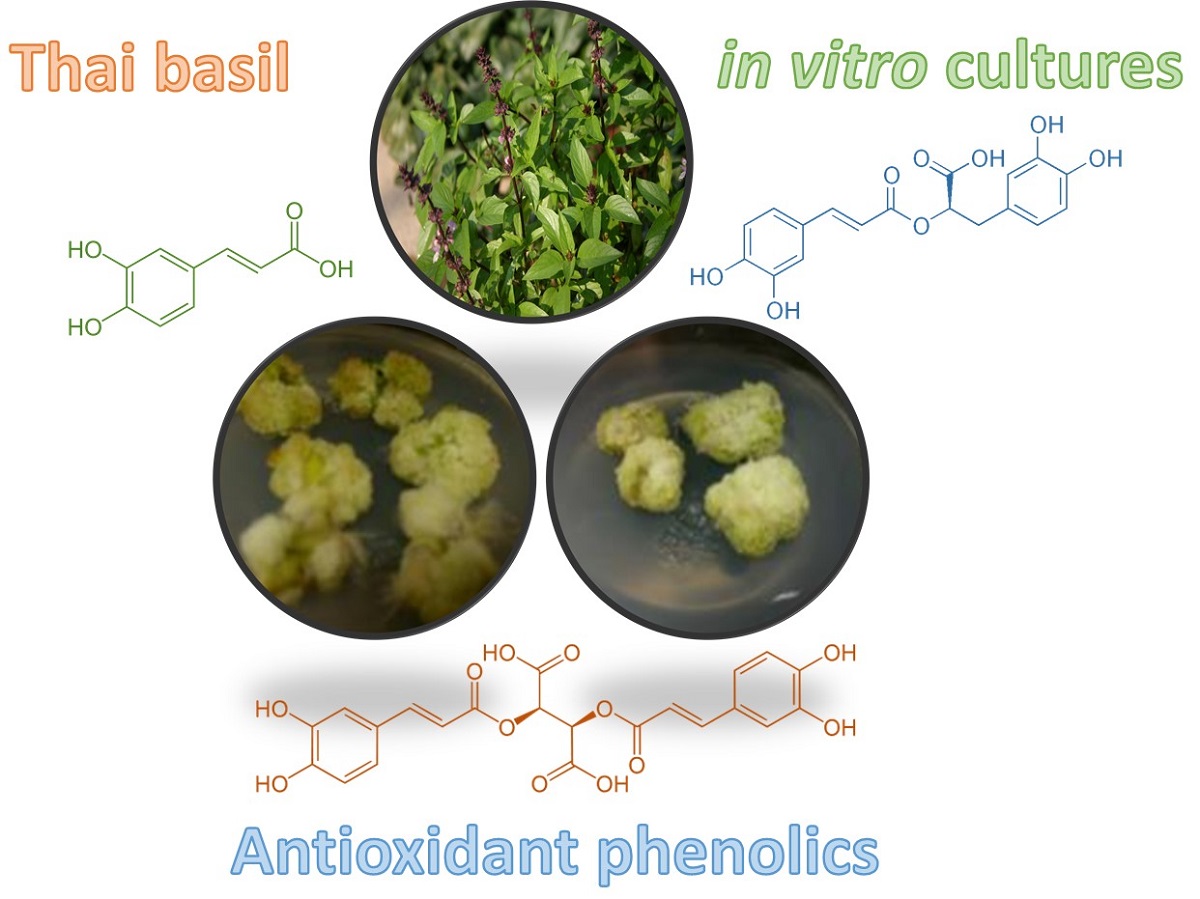Thai basil is a renowned medicinal plant and a rich source of bioactive antioxidant compounds having several health benefits, with actions to prevent of cancer, diabetes and cardiovascular disease. Plant cell and tissue culture technologies can be routinely established as an important, sustainable and low-cost biomass source for the production of high-value phytochemicals. The current study aimed at developing an effective protocol for the production of Thai basil leaf derived callus cultures with sustainable and high production of biomass and antioxidants as an alternative of leaves production. MS basal medium with various concentrations of plant growth regulators (PGRs) compatible with nutraceutical applications (i.e., gibberellic acid (GA3) and 6-benzylaminopurine (BAP) either alone or in combination with naphthalene acetic acid (NAA)) were evaluated. Among all tested PGRs, the combination BAP:NAA (5 mg/L:1 mg/L) yield maximum biomass accumulation (fresh weight (FW): 190 g/L and dry weight (DW): 13.05 g/L) as well as enhanced phenolic (346.08 mg/L) production. HPLC quantification analysis indicated high productions of chicoric acid (35.77 mg/g DW) and rosmarinic acid (7.35 mg/g DW) under optimized callus culture conditions. Antioxidant potential was assessed using both in vitro cell free and in vivo cellular antioxidant assays. Maximum in vitro antioxidant activity DPPH (93.2 % of radical scavenging activity) and ABTS (1322 µM Trolox equivalent antioxidant capacity) was also observed for the extracts from callus cultures grown on optimal conditions. In vivo cellular antioxidant activity assay confirmed the effective protection against oxidative stress of the corresponding extract by the maximum inhibition of ROS and RNS production. Compared to commercial leaves, callus extracts showed higher production of chicoric acid and rosmarinic acid associated with higher antioxidant capacity. In addition, this biological system also has a large capacity for continuous biomass production, thus demonstrating its high potential for possible nutraceutical applications.

